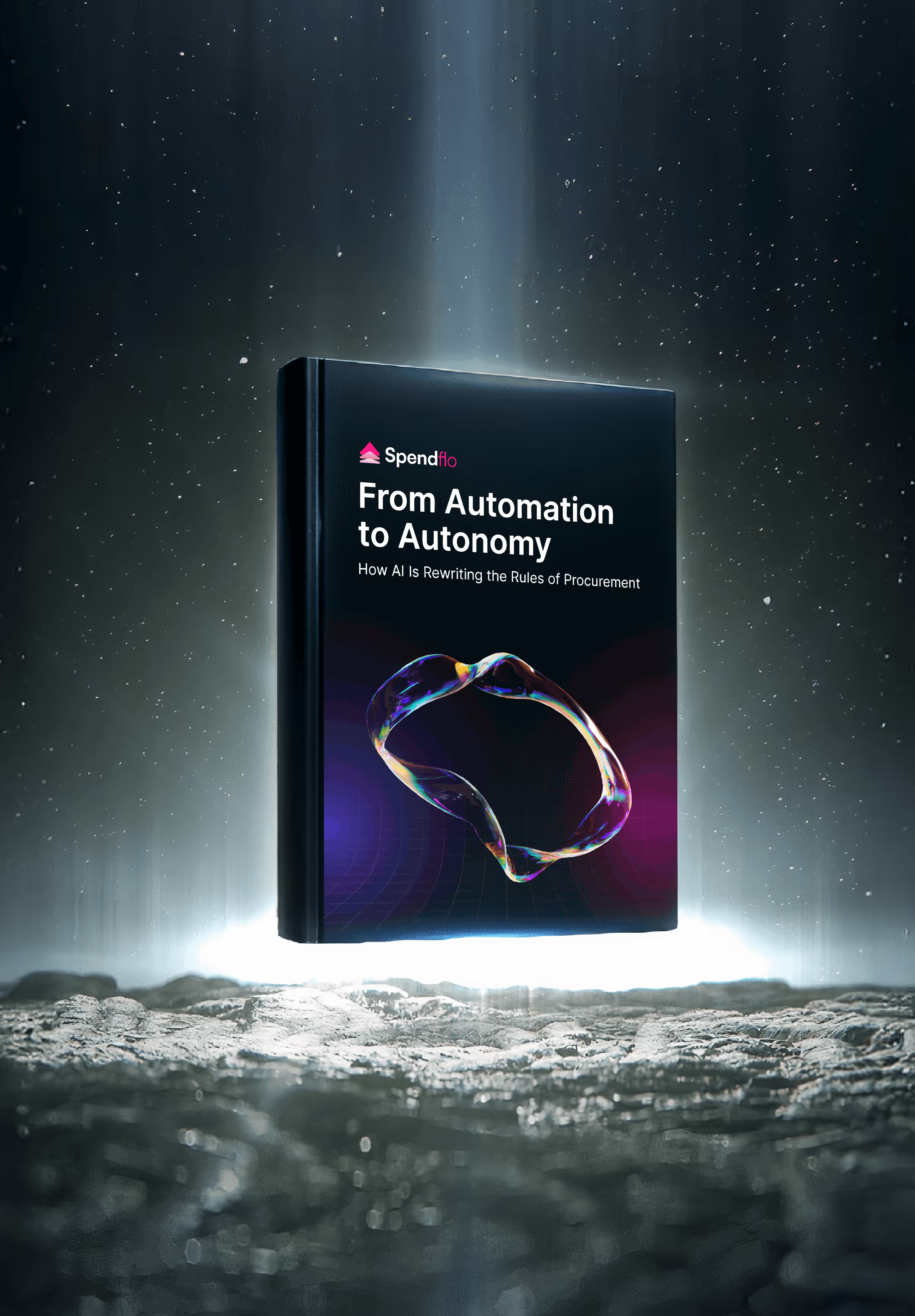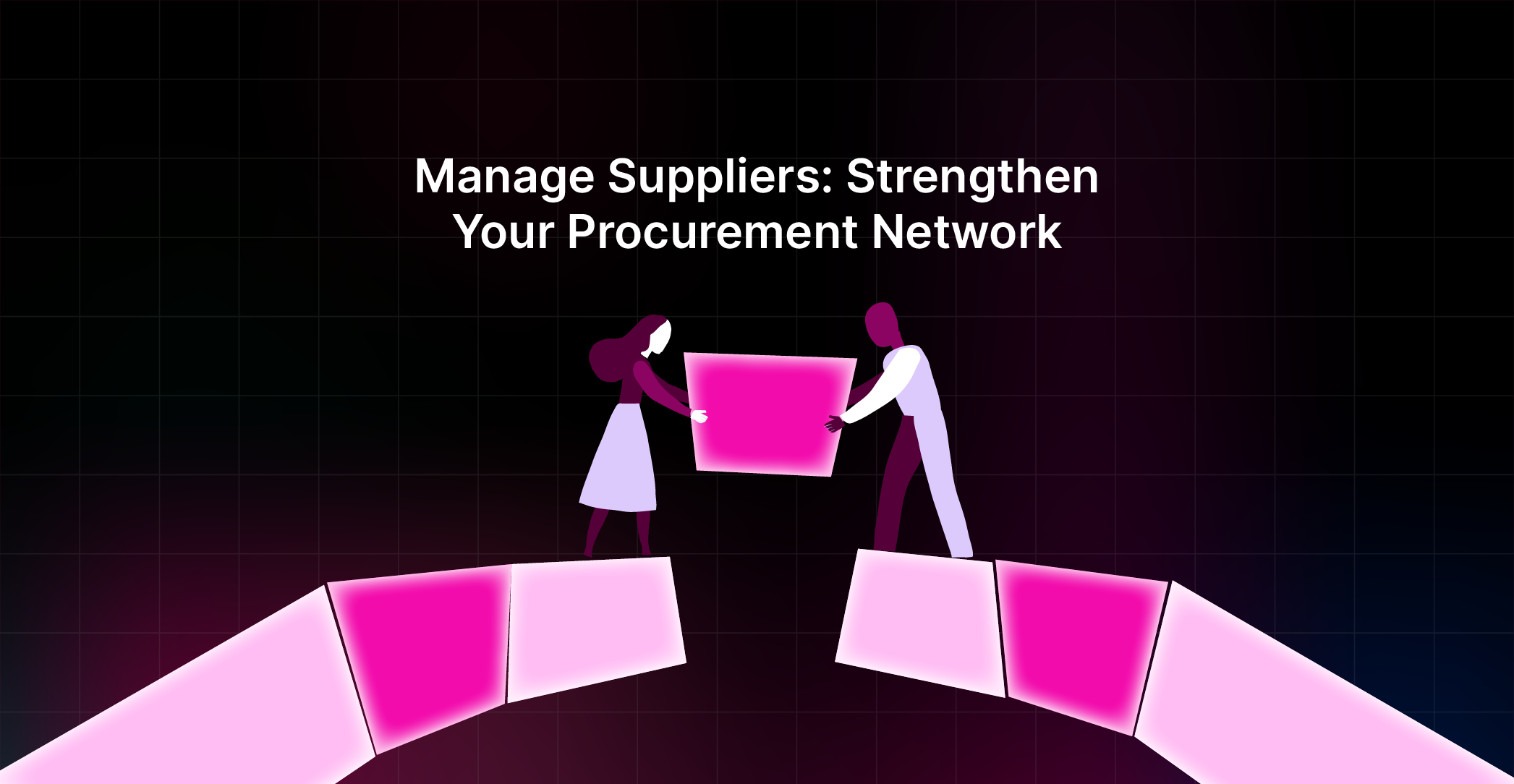

Procurement Market Intelligence: Everything You Need to Know About
.png)
Procurement Market Intelligence: Everything You Need to Know About
Learn how procurement market intelligence helps businesses save on software costs, mitigate risks, and make informed purchasing decisions.
.png)

Did you know that businesses can Case Study on their annual software spend by leveraging procurement market intelligence?
In this blog post, we will explore how to leverage procurement market intelligence and how Spendflo can help you save more.
What is procurement market intelligence?
Procurement market intelligence leverages insights, analytics, and trends to guide procurement decisions. It involves analyzing market trends, vendor performance, and total cost of ownership for software products. This enables organizations to identify top suppliers and negotiate optimal terms using comprehensive data.
Types of Procurement Market Intelligence
The types of procurement market intelligence fall under various categories and each one of them carries with it different value to procurement, finance, and IT teams. The combination of these types can help organizations to have the complete picture of the environment of their suppliers and the market.
1. Supplier Intelligence
Concentrates on the evaluation of financial health, track record, delivery capabilities as well as compliance of the vendors. It assists organizations to measure risks, achieve reliability and establish better supplier relations.
2. Market and Category Intelligence
Offers a bigger-picture outlook on industry trends, pricing, and the category dynamics. This kind of intelligence is essential towards discovering opportunities to save costs, the changes in supply-demand, and competitive sourcing decisions.
3. Competitive Intelligence
Understands the manner in which competitors conduct their procurement; including the levels of spend, sourcing policies and relationships with vendors. Competitive intelligence assists the negotiation positioning as well as organizations benchmarking against the competitors in the industry.
4. Risk Intelligence
Addresses financial, operations, cybersecurity, compliance, and geopolitical risks in the supply chain. It helps businesses to create contingency plans, reduce disruptions, and create resilience.
5. Compliance Intelligence and Regulatory Intelligence.
Tracks the developing trade regulations, data privacy regulations, ESG policies, and ethical sourcing policies. This guarantees that the organizations are well within the limit and the procurement is in line with the corporate responsibility objectives.
6. In-house Spend Intelligence.
Evaluates internal buying patterns, such as SaaS licenses and acquisition opportunities. It helps procurement departments eliminate redundancy, prevent shadow IT, and gain complete visibility into company expenditure.
Procurement Market Intelligence: The Key Benefits
A study by Deloitte revealed that companies leveraging procurement market intelligence can achieve up to 10-20% savings on their procurement costs. Apart from this, there are several other benefits for businesses, such as:
- Cost Savings: By leveraging procurement market intelligence, businesses can negotiate better prices and terms with vendors, leading to significant cost reductions.
- Risk Mitigation: Understanding market dynamics and vendor performance helps businesses avoid potential pitfalls and make more secure procurement choices.
- Informed Decision-Making: Access to comprehensive data allows procurement teams to make well-informed decisions that align with business objectives.
- Improved Vendor Relationships: Regularly evaluating vendors and understanding their market position can lead to more robust, strategic partnerships.
- Enhanced Budget Management: Accurate insights into software costs and usage patterns help businesses manage their budgets more effectively.
Key Components of Procurement Market Intelligence
Procurement market intelligence is built on data-driven insights that help businesses optimize sourcing, negotiate better contracts, and mitigate risks.
Here are the key components that shape effective procurement intelligence:
1. Supplier Intelligence
Understanding supplier performance, reliability, and compliance is critical. This includes assessing financial stability, tracking delivery performance, and using industry benchmarks to evaluate vendor capabilities.
2. Market Trends Analysis
Monitoring market shifts helps businesses anticipate price fluctuations, supply chain disruptions, and regulatory updates. Predictive analytics and competitor benchmarking provide valuable foresight for strategic procurement decisions.
3. Cost and Price Intelligence
Beyond purchase price, procurement teams must assess total cost of ownership (TCO), hidden fees and contract terms. Comparing industry pricing trends ensures better negotiation outcomes.
4. Risk Assessment and Mitigation
Identifying supplier, financial, and operational risks prevents costly disruptions. Businesses must evaluate supplier reliability, contract risks, and compliance factors while preparing contingency plans.
5. Benchmarking and Performance Metrics
It is important to track procurement KPIs as a measure of market intelligence initiative success. Organizations are supposed to go beyond the fundamental measures of cost savings, vendor performance, and contract efficiency.
Key elements include:
- Market Intelligence Program KPIs: Monitor the rate of supplier risk scores, compliance rates, procurement cycle time, and actual and estimated savings.
- Methods of ROI Calculation: Assess both direct cost savings (e.g. negotiated savings) and indirect benefits (e.g. exposure to lower risk, accelerated decision-making).
- Performance Tracking Frameworks: Compare results with industry standards using dashboards and scorecards, indicate gaps and recognize top performers among vendors.
- Ongoing Process Improvement: Periodically inspect the results of KPIs, solicit feedback of the finance and procurement teams, and optimize the process in order to achieve small steps of improvements in time.
6. Regulatory and Compliance Intelligence
To prevent legal and financial fines, it is important to be on top of the procurement regulations, trade policies and ethical sourcing standards. Vendor compliance reduces risks as well as fosters long-term trust between the supplier and the company.
Key components include:
- Supplier Risk Evaluation Frameworks: Standardized frameworks to evaluate the financial stability, cybersecurity practices and operational reliability of suppliers.
- Regulatory Compliance Monitoring: Monitor regulatory changes of trade-related regulations, data privacy laws (GDPR, CCPA), and industry-specific regulatory compliance requirements to keep pace with the audits.
- Supply Chain Risk Mitigation: Discover potential disruption events, e.g. geopolitical risks, reliance on single-source suppliers or transportation issues and develop contingency plans.
- ESG (Environmental, Social, Governance): Incorporate the ESG evaluations into the procurement process to make sure that vendors are in line with sustainable and ethical business conduct. This enhances adherence and also contributes towards corporate responsibility objectives.
How to gather accurate data for procurement market intelligence
The procurement market intelligence is based on accurate data. To create a 360-degree perspective, two methods that are complementary to each other should be embraced in organizations; Primary Research (internal intelligence), and Secondary Research (external competitive intelligence).
1. Primary Research: Company Intelligence Gathering
Primary research focuses on collecting data from within your own organization and vendor relationships. This helps procurement and finance teams align decisions with internal goals.
Key methods include:
- Assess Vendors: Review vendors on financial stability, service quality and business alignment. Examine their market standing, risk status and feedback.
- Cost-Benefit Analysis: Direct and indirect costs should be compared with the benefits which are expected to be made to determine the most cost-effective alternative.
- Total Cost of Ownership (TCO): This is based on the cumulative costs of the product, including support, maintenance, and renewals- not only the initial price of the product.
- Collaboration to Avoid Shadow IT: Ensure departments coordinate to prevent duplicate subscriptions (e.g., one team paying for Slack while another pays for Teams).
- User Sentiment Analysis: Solicit responses about internal users to determine their level of satisfaction, areas of pain, and barriers to adoption.
- Due Diligence to avoid Buyer Remorse: Before signing a contract, review features, scalability, and contract terms.
- Price Increase Trends: Monitor vendor price fluctuations to predict them and proactively negotiate.
2. Secondary Research: Competitive Intelligence Gathering
Secondary research helps organizations understand the external environment—how competitors and the broader market are behaving. This creates benchmarks for smarter decision-making.
Key methods include:
- Competitor Spending Analysis: Study the level at which the competitors are spending on equivalent software or suppliers. This is a point of reference to your personal budgets.
- Market Positioning Assessment: Research on position of competitors with respect to vendor alliances, technology uptake and pricing policies.
- Benchmark Comparison Methodologies: Compare your vendor pricing, discount rates and your contract terms to industry best practices.
- Strategies in Competitive Sourcing: Find other competitors and solutions that competitors make use of to strengthen their bargaining power.
- Third-Party Reports and Industry Data: Leverage analyst reports, case studies, and SaaS pricing indexes to justify procurement decisions.
Implementation Framework
Now that you understand procurement market intelligence, the next step is integrating it effectively into your procurement workflows. Below is a structured framework that ensures smooth adoption and measurable impact.
1. Define Objectives and Scope
- Determining the procurement elements within the intelligence will be of greatest benefit, including: supplier assessment, contract negotiation, or cost benchmarking.
- Match the objectives with the business priorities such as cost reduction, compliance or risk reduction.
2. Establish Data Collection Methodologies
- Collect data in various sources: ERP/P2P systems, supplier performance records, market reports and third party benchmarks.
- Consistency in data capture and data storage.
- Consider cleaning and validating data on a regular basis to eliminate errors or duplicates.
3. Build the Right Team Structure
- Procurement Analysts- analyze data trends and compare supplier performance.
- Finance Teams - analyze financial implications of insights on budgets and ROI.
- IT & Data Specialists- coordinate integrations, data security as well as automation tools.
- Procurement Leaders- final decisions are made on intelligence reports.
4. Integrate Technology and Tools
- Procurement software should include embedded analytics dashboards that provide real-time visibility.
- Assimilate SaaS streamlining instruments, agreement libraries and risk management systems.
- Make sure that it can work with the current ERP and financial systems to facilitate a smooth flow of work.
5. Apply Structured Decision-Making Frameworks
- Objectively interpret data using tools such as SWOT analysis, supplier scorecards and risk matrices.
- Use predictive analytics to predict price changes, supplier risks and demand changes.
- Automate exception management to identify anomalies early and minimize human intervention.
6. Communicate and Report Findings
- Organize intelligence into structured reports using executive summaries and data visualization.
- Provide effective, easy to act on recommendations to procurement and finance departments.
- Make it accessible to enable decision-makers to make fast actions.
7. Continuously Refine and Optimize
- Review intelligence quarterly or monthly in fast-changing markets.
- Incorporate feedback from procurement, finance, and IT teams.Update benchmarks and supplier risk ratings to keep intelligence current.
How Spendflo helps you make informed renewal choices based on data
SaaS procurement and renewal solution Spendflo provides a comprehensive suite of tools designed to streamline the software procurement process and help businesses save on SaaS expenses.
Here’s how it can assist you in your procurement journey:
Spendflo’s Assisted Buying feature provides expert guidance throughout the procurement process. From identifying the best vendors to negotiating favorable terms, Spendflo handles everything and ensures you maintain your competitive edge.
The Intake-to-Procure process simplifies the procurement workflow from the initial request to the final purchase. We ensure that all procurement activities are aligned with your business’s goals and budget constraints.
Spendflo’s cutting-edge Procurement Analytics provides deep insights into your software spending patterns. By analyzing this data, you can identify areas where you are overspending, track usage, and optimize your software portfolio to ensure maximum value.
With Spendflo, businesses can navigate the complex landscape of SaaS procurement with confidence and ensure that they get the best value for their investments. To learn more, schedule a demo now!
Frequently Asked Questions
1. How does procurement market intelligence differ from traditional procurement methods?
Conventional procurement is based on past information and is manual in nature. Procurement market intelligence on the other hand applies real-time information, benchmarking, and predictive analytics to make decisions. This provides more visibility to finance and procurement forces, competitive prices, and minimizes the chance of excessive expenditure.
2. How often should procurement market intelligence be updated and reviewed?
Ideally, the market intelligence ought to be looked into every quarter. Nevertheless, when the company is developing rapidly and has many negotiations with the vendors and renewals, a monthly review is needed as the teams will remain on track with price changes, supplier risks, and compliance needs.
3. What ROI can organizations expect from investing in procurement market intelligence?
The average savings on SaaS and vendor spend is 20–30% in the case of market intelligence being effectively applied in an organization. More than saving costs, it also reduces the time and expenses of procurement, enhances compliance, and saves manhours of the work of finance and procurement departments.
Ready to gain these benefits for your business? Get started with Spendflo today.















.png)










.avif)





